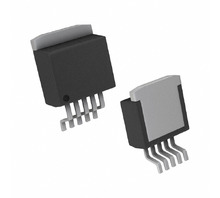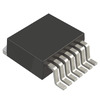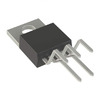Manufacturer Part Number
LT1076IQ#TRPBF
Manufacturer
Analog Devices
Introduction
The LT1076IQ#TRPBF is a versatile and robust DC-DC converter with adjustable output for a range of power management applications.
Product Features and Performance
Step-Up, Step-Down, Step-Up/Step-Down functionality
Adjustable output for flexible application use
Able to provide positive or negative output configurations
Supports Buck, Boost, and Flyback topologies
Provides an adjustable voltage output ranging between 2.5V and 35V
Capable of delivering 2A current at the switch
Features a 100kHz switching frequency
Designed for surface mount integration
Operational in a wide temperature range, from -40°C to 85°C
Product Advantages
High flexibility due to its various topological supports
Wide input voltage range catering to different power sources
Suitable for a broad array of applications with its adjustable output parameters
Robust design ensuring operation in extreme temperatures
Key Technical Parameters
Number of Outputs: 1
Voltage Input (Min): 8V
Voltage Input (Max): 45V
Voltage Output (Min/Fixed): 2.5V
Voltage Output (Max): 35V
Current Output: 2A (Switch)
Frequency Switching: 100kHz
Synchronous Rectifier: No
Operating Temperature: -40°C ~ 85°C (TA)
Quality and Safety Features
Reliable performance in a wide range of operating temperatures
Compatibility
Surface Mount device compatible with TO-263-6, D2PAK (5 Leads + Tab), TO-263BA
Application Areas
Industrial power systems
Portable electronics
Telecommunication devices
Automotive applications
Product Lifecycle
Currently Active
No indication of nearing discontinuation
Availability of replacements or upgrades should be verified with the manufacturer
Several Key Reasons to Choose This Product
Manufactured by a reputable company, Analog Devices
Offers great flexibility for design engineers due to its configurable output
Ensures compatibility with a wide range of input sources due to its broad input voltage range
Facilitates integration due to its surface mount packaging
Suits various applications given the operational temperature range




 LT1076IQLinear Technology / Analog Devices
LT1076IQLinear Technology / Analog Devices LT1076HVMKLT
LT1076HVMKLT LT1076IT#PBFAnalog Devices Inc.IC REG MULT CONFG ADJ 2A TO220-5
LT1076IT#PBFAnalog Devices Inc.IC REG MULT CONFG ADJ 2A TO220-5 LT1076HVITLinear TechnologyLT1076 - STEP-DOWN SWITCHING REG
LT1076HVITLinear TechnologyLT1076 - STEP-DOWN SWITCHING REG LT1076IT-5#PBFLinear TechnologyIC REG BOOST 5V 2A TO220-5
LT1076IT-5#PBFLinear TechnologyIC REG BOOST 5V 2A TO220-5